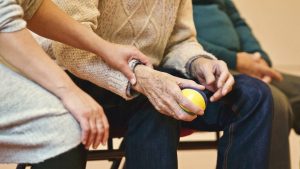On November 26, some of the finest minds in medical science will meet in Sydney, Australia to discuss the latest research on motor impairments – the diseases or health conditions that disrupt function of the human motor system (brain, nerves, and muscles) and cause physical disability. The event that will bring these researchers together is the First International Motor Impairment Conference. The conference will span three days and include over 80 presentations on topics such as muscle strength and weakness, sensation and falls, pain and motor control, muscle architecture and contracture, and research methods. Specific motor impairments to be discussed will relate to stroke, cerebral palsy, multiple sclerosis, spinal cord injury, Parkinson’s disease, and age-related disability.
The First International Motor Impairment Conference derives from the Motor Impairment Grant that was awarded by the NHRMC to four researchers at NeuRA (Simon Gandevia, Stephen Lord, Rob Herbert and Janet Taylor). The purpose of the Motor Impairment work has been to study and then disseminate information about motor impairments, as these conditions are common. In 2016, the Australian Bureau of Statistics reported that 1.4 million Australians have a “severe” or “profound” limitation of core activities (ABS, 2016). The Motor Impairment team at NeuRA has started to break down this statistic to determine the prevalence of specific motor impairments in the Australian population. In the first stage of an long-term collaboration with the Sax Institute, the team did a preliminary scoping random sample of 1,000 people of the “45 and Up” cohort (Banks et al. 2008). Of 710 respondents, 10-21% reported difficulty using their hands, arms or legs; 16% rated their balance as fair or poor; 2-4% had weakness of the hands, arms or legs; 1-4% reported their hands, arms or legs tired easily; 3% reported fatigue that limited everyday activities; and 2-4% had limited joint movement from contracture in the hand, leg or arm. As there are ~9 million Australians aged over 45, these data suggest that motor impairments affect millions of Australians and, by extension, hundreds of millions of people worldwide. Thus, the information presented at the First International Motor Impairment Conference will help advance knowledge of the underlying pathophysiology of certain motor impairments and their subsequent treatments.

If you are unable to attend the conference, but are interested to learn more about the topics discussed, click here to view the research abstracts. Also, you can get updates from the conference by following the conference hashtag (#MotorImpairment2018) and the Motor Impairment Twitter account (@MotorImpairment).
REFERENCES
Australian Bureau of Statistics, Disability, Ageing and Carers, Australia: Summary of Findings, 2016: http://www.abs.gov.au/ausstats/abs@.nsf/Lookup/4430.0main+features202015.
Banks E, Redman S, Jorm L, Armstrong B, et al. Cohort profile: the 45 and up study. Int J Epidemiol 37: 941-7, 2008.

